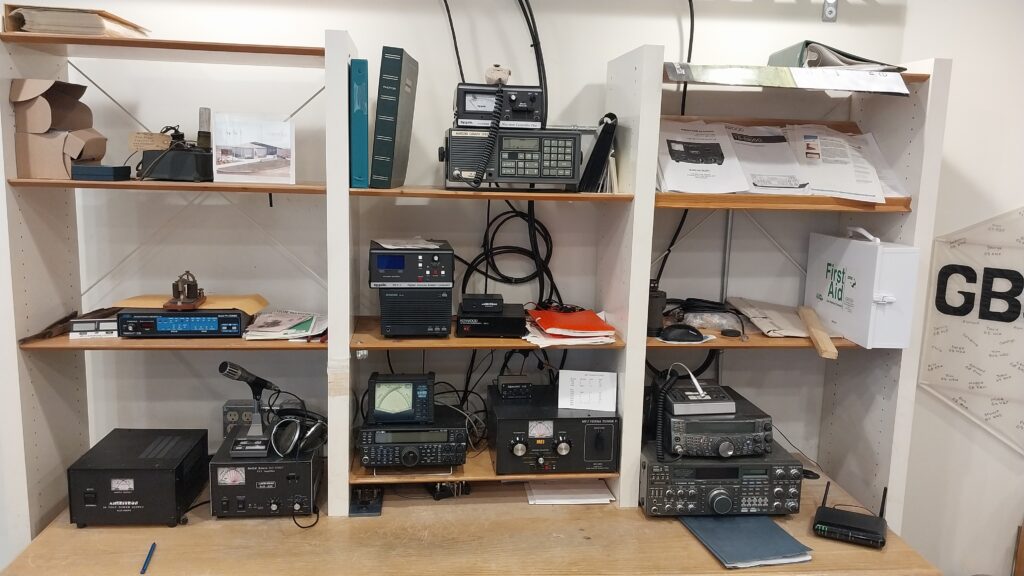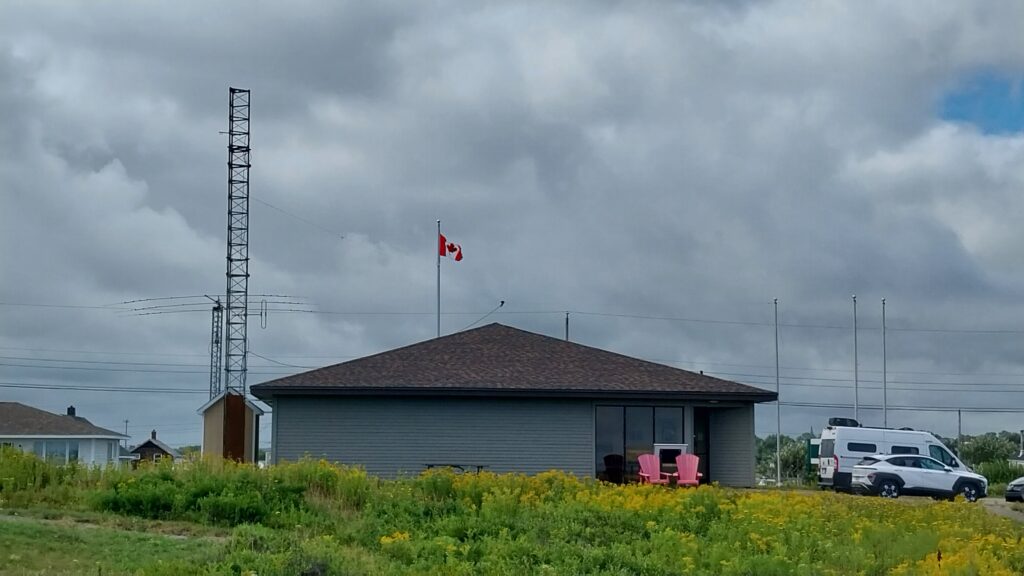On vacation in Nova Scotia, KM4RSL and myself (KK4JP) visited the Glace Nova Scotia site where in 1902 Marconi sent the first successful west-to-east transatlantic message. The equipment was removed in 1904 to another location, but foundations of the antenna towers still remain. The photo below shows a model of the site as it was in 1902.
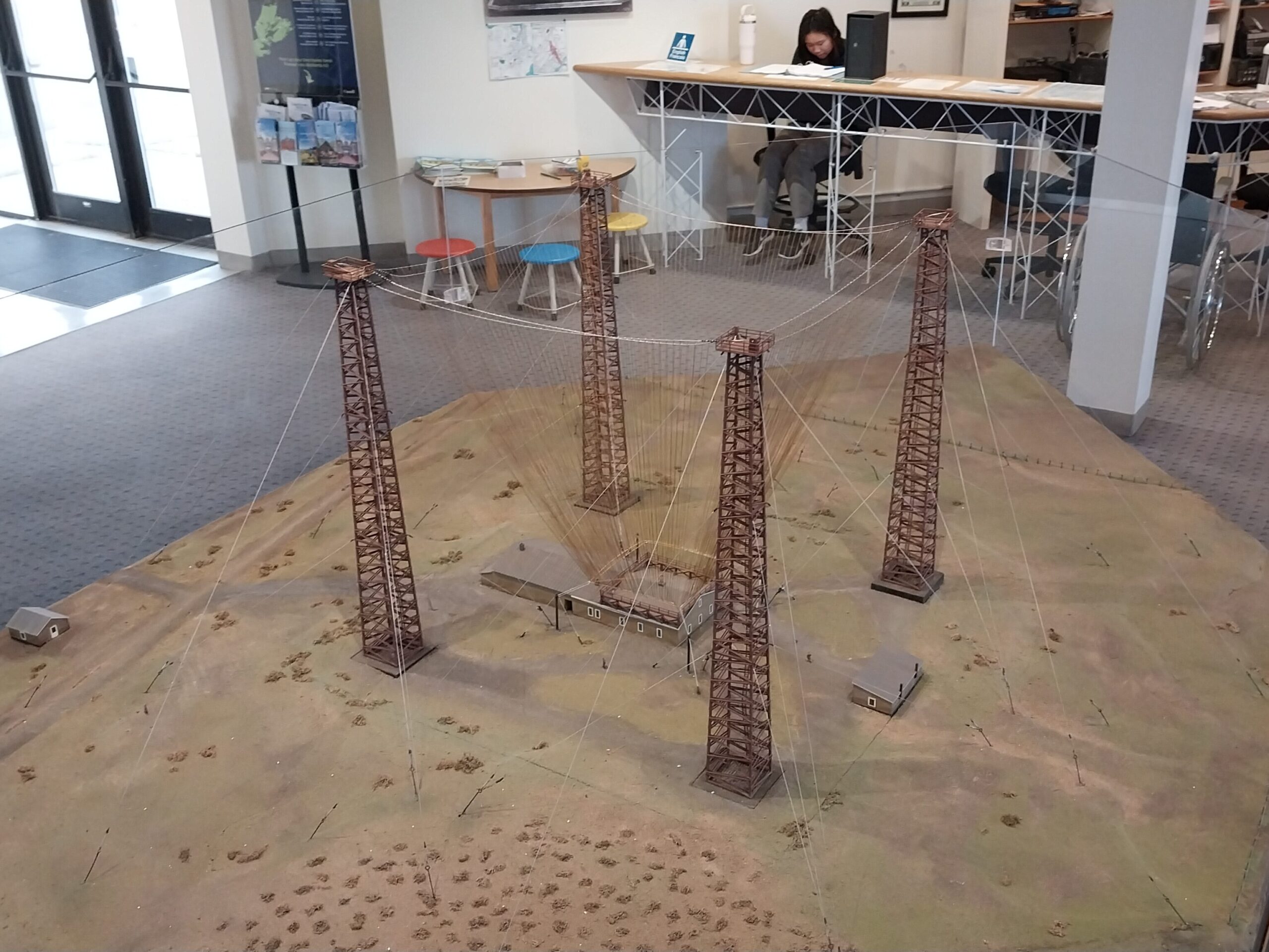
Four 210-foot wooden towers were arranged in a 210-foot square. Suspended from a square of wires running between the tops of the towers were 400 copper wires, which created an inverted pyramid antenna. It was driven by a 75 kW spark-gap transmitter. Although able to transmit to Poldhu in Cornwall, England, it was not reliable enough and was moved in 1904 to a new location, with an enlarged antenna, which opened for commercial use in 1907. Interestingly, receiving stations needed to be located far away from the transmitting stations. The spark-gap transmitters were simply too electrically noisy to transmit and receive from the same location – even on different frequencies. All of the frequencies used were either long wave or very long wave – lower than 1 MHz (often a lot lower, such as 45 kilohertz).
The site still has the foundations on which the antenna masts were constructed.
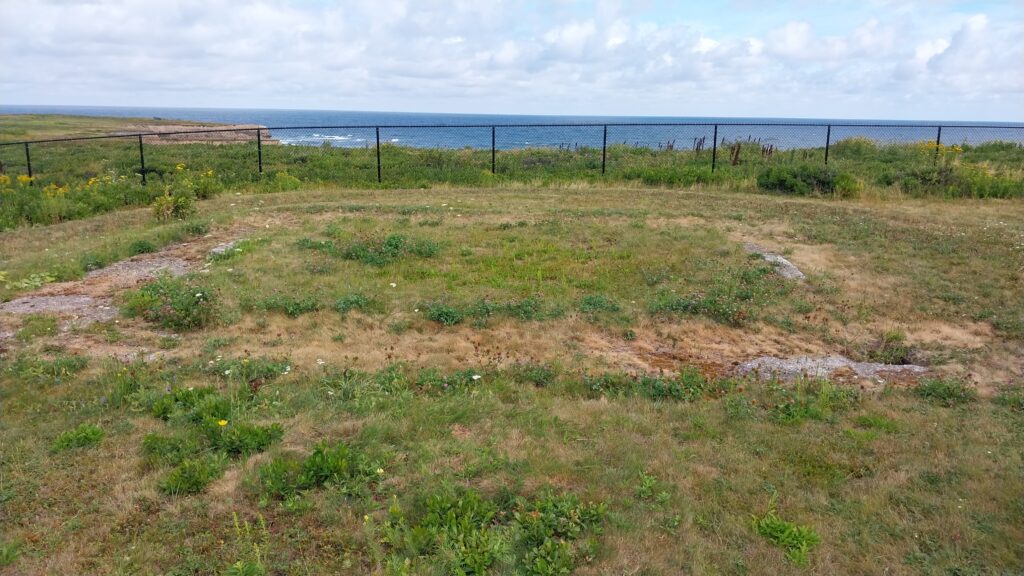
The Visitor Center had some antique equipment, largely from ship systems and photos of some amazing old facilities. They definitely thought big those days. Keep in mind that the 4 towers, associated antennas and 75kW power system were just for a TEST! Particularly amazing to me was a photo of an air-gap capacitor used at one of the Irish stations. It consisted of galvanized steel panels suspended from a the roof of a 350-foot long, 3-story “condenser house”. Each of the 1,800 panels were approximately 12×30 feet with one-foot spacing arranged in multiple rows. I’d share the photo, but I suspect is is copyrighted, so a description will have to suffice for now. https://shastified.com/2022/04/07/from-newfoundland-to-ireland-with-marconi/ has a photo of the building and more information on early Marconi spark-gap transmitters.
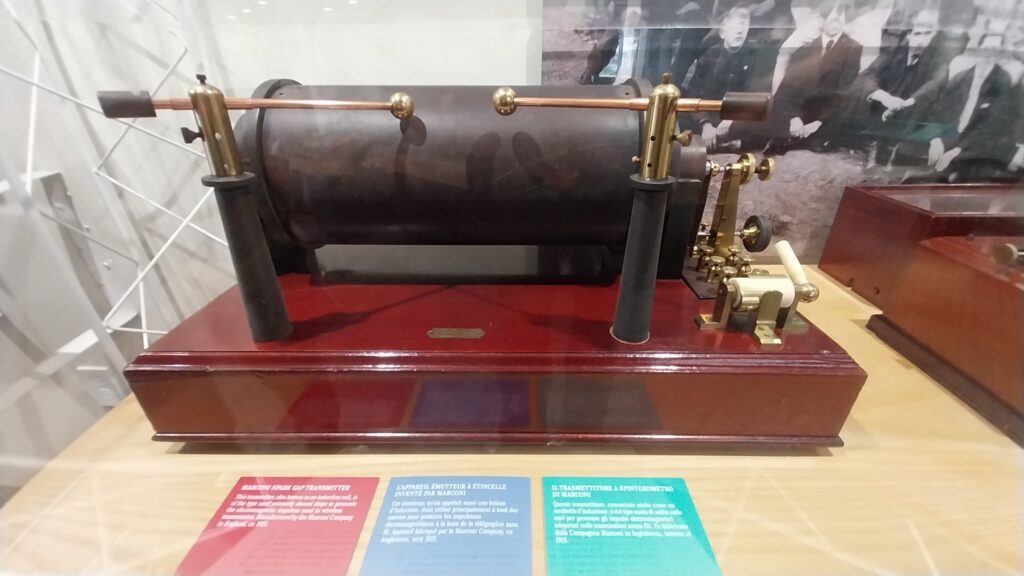
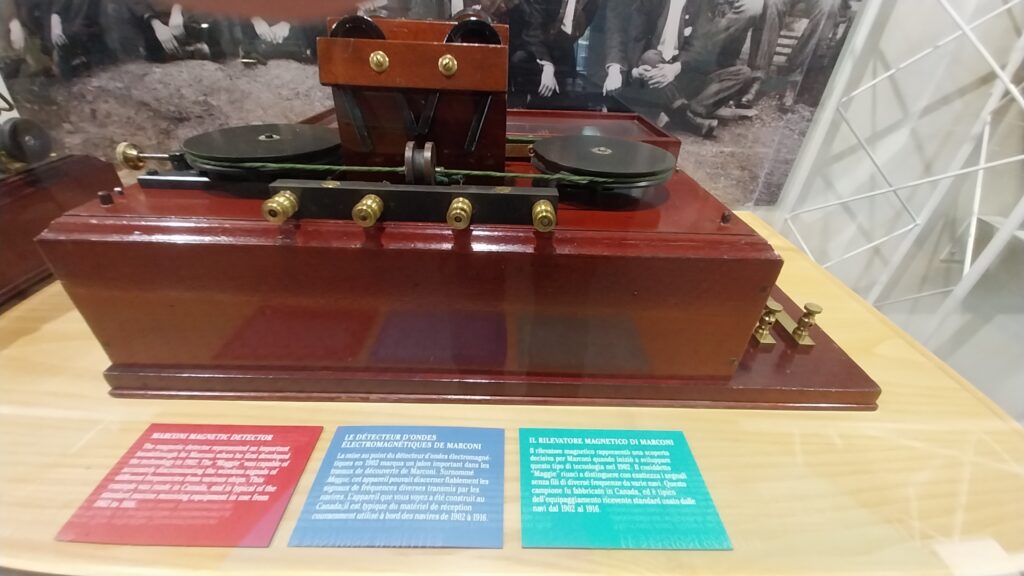
The visit provided insights into the early days of radio prior to the advent of amplification – the tube remained firmly in the future when this equipment was used. Super-high power was needed because bandwidths needed to be broad in order to allow enough energy to be collected to trigger detectors. One article noted that the noise from sparks created by one Massachusetts transmitter created enough audio noise to annoy residents up to 4 miles away. It didn’t help that prime operating hours were 10 pm to 2 am!
The Visitor Center has a ham station, with an OCF dipole, 20-m beam and a VHF antenna. Unfortunately, no local ham was on duty, so we did not have an opportunity to attempt a QSO from the site.
